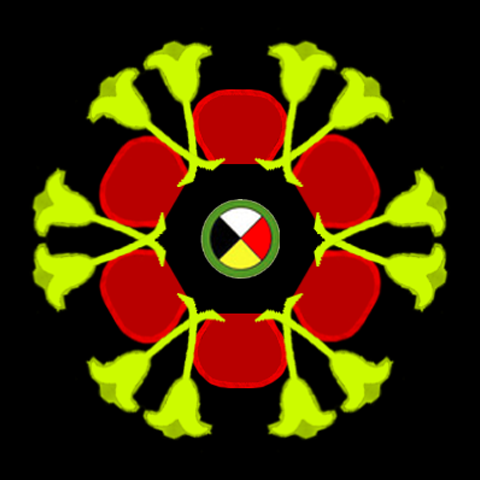Anishinaabe Quilts
The Anishinaabe are the Indigenous people of the Great Lakes regions: Ojibwe, Cree, Algonquin, Potowatomi, Odawa and others. The Anishinaabe created their own math and computing ideas before Europeans arrived.
This circle, divided into four quarters is called a “medicine wheel”. The Anishinaabe use this to understand how the world is organized. Many things happen in circles, from the shape of a nest to the cycles of living creatures. And many things are divided into fours: the year has four seasons; the earth has four directions. Each animal on this wheel represents a different aspect of life.
The medicine wheel repeats every 90 degrees, but the Anishinaabe show you can extend that idea to any angle. For example, this quilt has 8 flower petals, so they repeat every 45 degrees. Each petal is also moved out a distance from the center, so that you can see the tiny wheel at the origin point.
This means each Anishinaabe quilt pattern can be made with a simple list of changes: rotate by an angle, move out from the center, stamp the image, repeat. In computer science we call this list an algorithm. So now you know the basics of the Anishinaabe quilting algorithm.
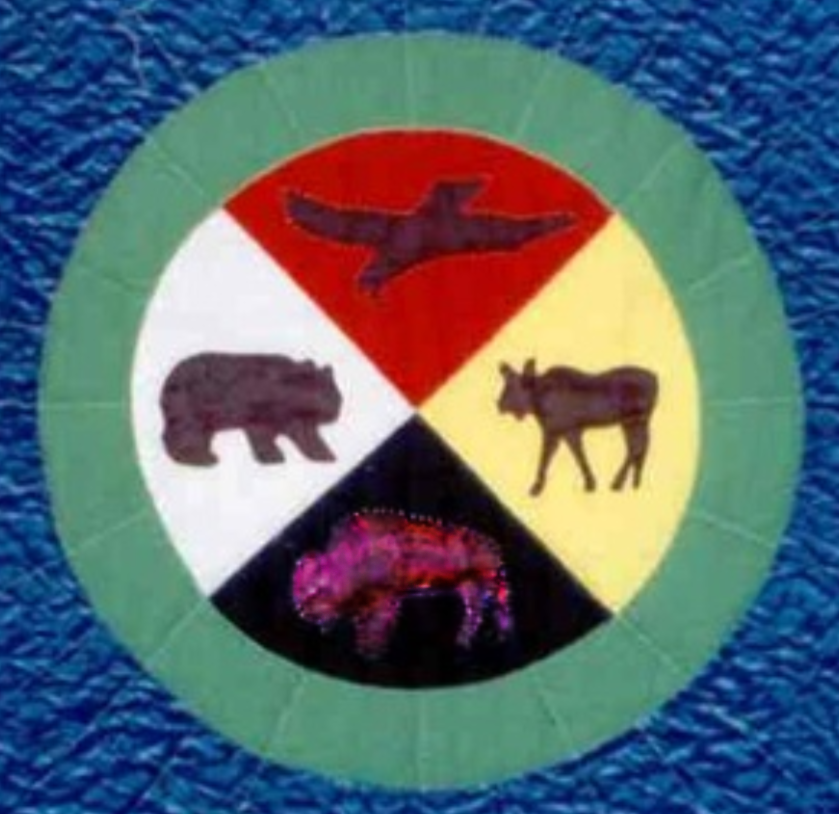
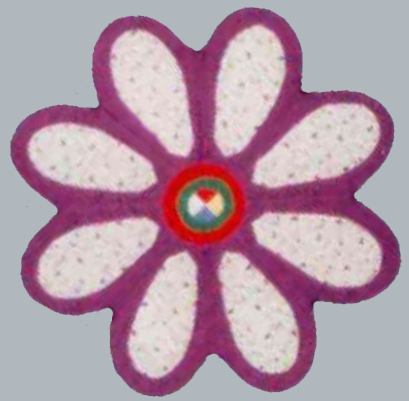

Anishinaabe artist Minaachimo-Kwe (Alice Olsen Williams) is famous for creating quilts using this style. Alice says she was inspired by her mother: "All my life I have watched my mother do her art work in different media—- beads, embroidery floss, threads of different colors and textures, birch bark, furs, roots, skins and leathers. In a lot of this work she uses floral and geometric designs."
Here you can see Alice with 5 generations: she holds her great-grandson, surrounded by her mother, daughter, and granddaughter.
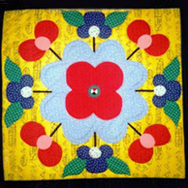
Flowers at the Petroglyphs
Alice describes this quilt as follows: "Not far from my home at Curve Lake First Nation is a spot sacred to our people. Several generations ago, Anishinaabe came to the area and left sacred drawings on the soft rock. The bright yellow fabric with the black markings reminds me of the life-giver, the sun, shining down on the petroglyphs.”
Notice that some of the plants in this quilt are like a mirror image. So this algorithm adds a “reflection” step to the list.

Red Lake TRC Quilt
Like the US, Canada forced native children into boarding schools, where they were punished for speaking their language or expressing their culture. In 2008, Alice asked school survivors to sew quilt blocks that represented their perseverance. At Red Lake, they assembled them into a quilt as part of Canada's Truth and Reconciliation Commission (TRC).

Meaning of the Jellybeans
In the bottom right of the Red Lake TRC quilt, we see a circle with 4 hearts. That was a story from one of the survivors who said she had smuggled a bag of jelly beans into the school. Each day she would split one bean into 4 parts, and give a quarter to each of her friends. Quilts can help us remember acts of resistance, even from childhood.
Creating your Virtual Quilt:
When you get to the simulation, you will be using Alice's approach to Anishinaabe quilts. Here you can see how the algorithm sets up the repeat loop: go out some distance, stamp the image, come back to the center, and rotate. Just by repeating that with different “costumes” and numbers will give you this beautiful pattern.
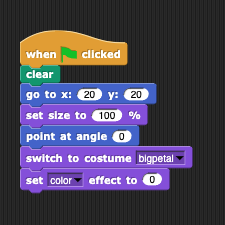
First, initialize which "costume" to show, and the position, size and color.

Second, inside loops you repeat the geometric transformations. In this case you rotate, move out, stamp, and move back in.
Biidaaban Reinhardt, a citizen of the Sault Ste. Marie Tribe of Chippewa Indians and SUNY physics graduate student, demonstrates how code creates a quilt pattern.
